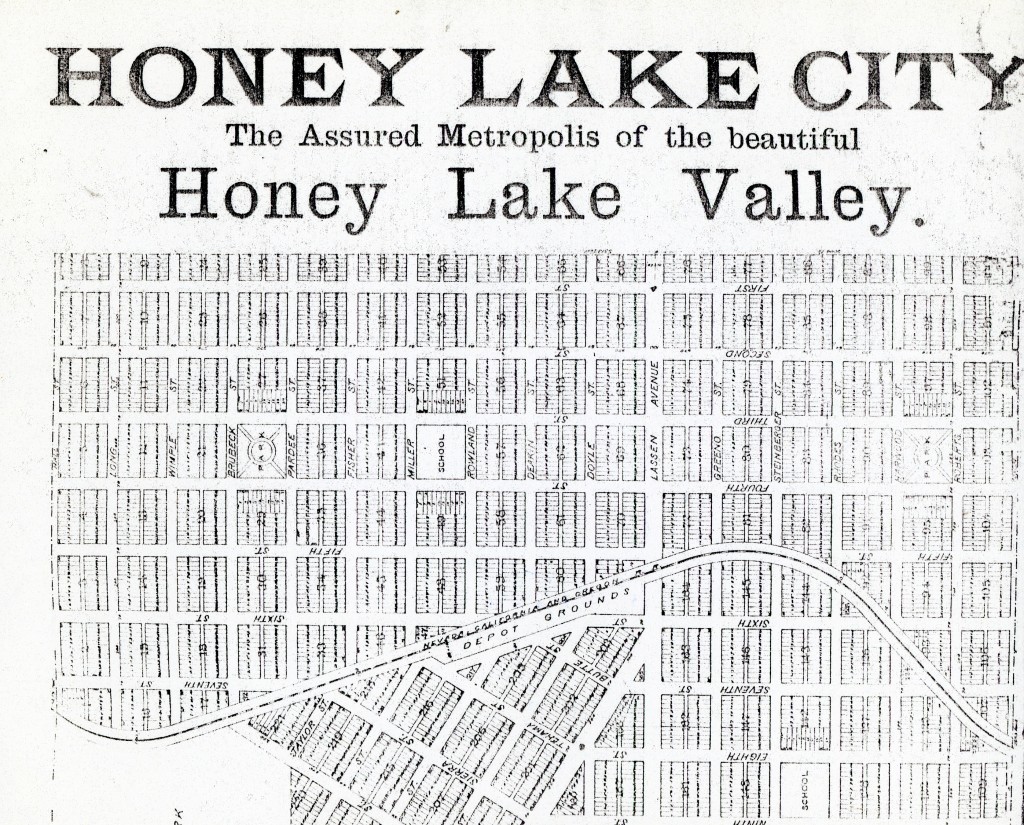
This was the planned metropolis of the Honey Lake Valley Land & Water Company, established in 1891. The company was involved in a major reclamation project for the eastern portion of Honey Lake Valley. The main water supply would be that of their reservoir, Lake Greeno, constructed on Long Valley Creek.
It was a dream city of the truest sense, but it would only appear on paper. It did have its own publication, a monthly, the Honey Lake Valley Farmer. The Farmer published in San Francisco in 1892, noted that the location of the publication in San Francisco was only temporary, “until our new office is established in Honey Lake City.” In its first issue, the Farmer of April 1892 published their vision of Honey Lake City: “Everyone who have traveled northward on the Nevada, California, Oregon Railway, through the Honey Lake Valley, will remember where the railroad, with a wide sweeping turn, leaves the mesa land and commences the descent into the valley proper. This is the site of Honey Lake City, and its selection is peculiarly happy and appropriate. Indeed, it is difficult to see how the chief and important city which must grow as a result of the growth and development of this territory, could be elsewhere situated. The location is the natural center of all the new lands which the irrigation enterprises now under way will make into farms, and for all the manifold tributary industries—grazing, lumbering, mining, manufacturing—which will develop collaterally with this irrigation development.
“There is no point from which the future of this magnificent valley may be seen more comprehensively than from here. The view commanded is complete. Northward lies the valley in one panorama—to the right the vast level which easy fancy pictures in the green and dun of prosperous farms white dotted with homes and silver lined with water ditches—and to the left the shimmering expanse of Honey Lake, stretching away to the deep green of the timbered mountains beyond. One need not to be prophet to fortell the teeming city which will here be made by the contributions from the quarter million acres of rich valley farms, from the wide expanse of grazing and agricultural country to the north and northeast, from the vast timbered and mineral mountain region to the west, and from the still further places which the railroads will bring in touch and trade with Honey Lake City.
“The Farmer foretells with confidence that the growth of our town will be a thousand a year from the start, with a round ten thousand for the census taker at the beginning of the century.”
While it never materialized, it would eventually become known as Herlong.